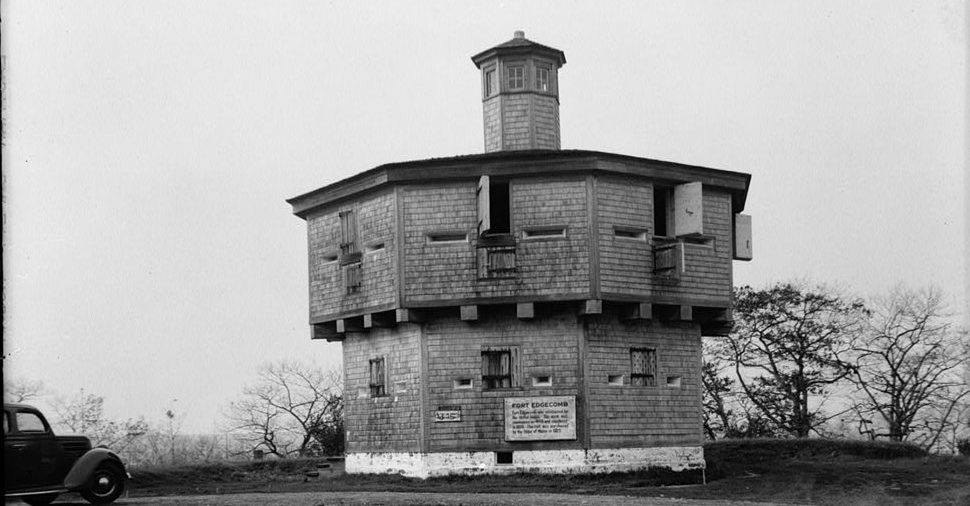Elements of a Security System – Part 4
by J.M., Survival Blog:

(Continued from Part 3.)
The second type of alerting – remote signal back to a centralized alarm console with a wired or wireless connection when the tripwire is tripped – can be a bit more complicated. In either case you can use something as simple as the clothespin switch to connect two wires to close the circuit, or to ‘press’ the button on a remote transmitter to trigger a relay that set off a light/buzzer.
Regardless of the use of local versus remote alerting, if there are any electronics or other components that could degrade when exposed to the elements (like primers, flares, etc.) used in your alerting device you should protect it. This can be a simple as placing it inside a plastic bag, covering it with a condom, or enclosing the alarm in a waterproof container. Run the tripwire connector out of the container at a slight downward angle to ensure water doesn’t run down the line and into the container, and paint the container to match whatever surface it’s attached to. Ensure that you have some method of easily attaching the alarm container to a tree or post – I bolt on vertical strips of thick plastic with holes drilled in them to the back of my alarm boxes so I can easily attach them using nails, screws, wire or zip ties.
If you’re using a local alarm like the personal noise alarm or a flashing light you may also want to consider installing it up high and out of the reach of anyone that trips it – that way they can’t quickly smash it, giving you more time to localize where the alarm is coming from. Use screw eyes to route the tripwire where you need it.
You can also trigger multiple signal types and combinations of local/remote alarms with a single tripwire. For example, you could tie the alarm end of the tripwire in a ‘Y’ and connect one tail to a clothespin that activates a remote transmitter and the other to an aerial flare that fires when it trips. This can be useful for creating alarms that will alert you in a wide variety of lighting and weather conditions – a flashing light might not be noticed during the day and a siren may be difficult to localize at night, but when combined the two provide a much better solution.
Tripwires also don’t have to be physical wires – you can also use lasers or infrared light to set up a tripwire. This typically requires a device or reflector at each end of the virtual ‘wire’, and some of them can cover a very long distance. I use an active infrared sensor part of my system to cover a row of windows in the front of my house (from the inside). Even though some of these devices are rated for outdoor use I’d recommend caution when doing so – heavy rain or snow, falling leaves, etc. can generate false alarms.
MOTION SENSORS
Motion sensors are another good option to use for a security system. The most commonly available motion sensors use passive infrared (PIR) sensing, which essentially means it detects temperature differences between the infrared heat signatures of two side-by side zones, such as in the case of a person walking across front of the sensor. As mentioned previously, this allows a single motion sensor to provide coverage for a large area and doesn’t require direct physical contact to trigger the sensor.
There are some potential downsides: The first is that they can be subject to false alarms. Events such as a dog or other animal walking by can trigger an alarm, and even moving shadows cast by the sun can trigger them. Many motion sensors provide adjustments for things like range and sensitivity, which can help you minimize false positives. Another possible downside is that they can be defeated – since they rely on the infrared light generated by the heat of a person’s body, someone could hold up a large piece of Styrofoam or even a sheet of plywood away from their body to block the sensor’s view of their body heat. Of course, an intruder would first have to know that the sensor is there.
I use motion sensors primarily in controlled areas (like inside my house and garage) to minimize false alarms, but I do have a couple outside covering some doors. On the outside ones I’ve limited their field of view by gluing short lengths of plastic pipe over the sensor so they can only ‘see’ a very small area, like my front and back doors. It’s not a perfect solution but it does significantly cut down on false alerts.
One good option for a motion sensor to use with a centralized console system is a simple sensor with a built-in switch – 12V goes into the sensor, and if motion is detected it sends the 12V back out on a different set of connectors, which you can hook up to a light/buzzer. Note that these aren’t designed for outdoor use, but I’ve found that as long as you keep them out of direct contact with water (like under a roof overhang) they tend to work fine.
If you don’t need something that integrates with a centralized console or you want something more portable, the Dakota Alert MURS Alert Transmitter (MAT) is a good option (these have been discussed several time here on SurvivalBlog.com). It’s a battery operated (6 AA batteries) wireless PIR motion detector that send alerts over a MURS radio frequency. You can buy a mobile receiver unit from Dakota Alert, but you can also receive alerts on any radio that can receive the MURS frequencies (like an inexpensive Baofeng UV-5R). You can program up to four different alert messages on the same frequency (e.g. “Motion in Zone 1..4), and you can set each sensor to use one of four different frequencies, so you could monitor up to 16 of them with single radio, assuming the radio can continuously scan the four MURS frequencies.
There are a lot of other mobile motion sensor options available, such as those designed for hunters, some with solar powered sensors, etc. Be careful to check what power source is required for the base unit – if it requires a 120VAC outlet then it may not be usable if the grid goes down and you don’t have a solar system or an inverter for your 12V battery. Many of them can also support multiple motion sensors with a single receiver.
ADDITIONAL SENSORS
In addition to tripwires and motion sensors, there are other types of sensors available that can support different requirements:
- Reed switches – These are two-part switches that are triggered by the presence or absence of a magnet, and are useful for monitoring doors, gates, windows etc. The wired switch part is usually placed on a fixed surface like a door or window frame, and the magnet is placed on the moving part so that it’s close to the switch when the door/gate/window is closed. When the magnet is moved away the switch closes and completes the circuit. You’ll usually want a ‘Normally Closed’ Reed switch, which means the circuit is closed (power flowing) when the magnet is not next to it (door opened).
- Pressure switches – You can buy pressure mats that can be placed under a door mat or rug that turn a switch on when enough pressure is applied (like someone stepping on them). You can get these as a standalone unit with its own built-alarm, or as a simple switch unit you can use to trigger a buzzer/light on a central console. They’re available in a pretty wide range of sizes and trigger weights. Be aware that many of them say ‘indoor/outdoor’, but if you plan on placing one somewhere it may end up covered with standing water you should seal it in plastic to keep water out (a lesson I learned the hard way).
- Tilt switch – This is a switch that turns on when whatever it’s attached to tilts beyond a certain angle.
- Vibration sensor – These are designed to trigger when they detect vibrations, such as glass breaking. They typically come as a self-contained unit with a built-in alarm.
Loading...



